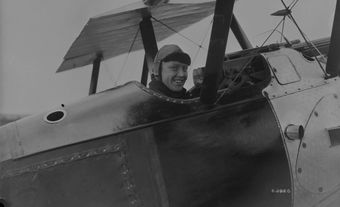John Norton (Teyoninhokarawen), Kanyen’kehá:ka (Mohawk) Chief, Indian Department interpreter, school master (born 16 December 1770 at Dunfermline, Scotland; died c.1831). John Norton was the son of a Cherokee father and Scottish mother (surname Anderson). Norton later claimed to be the son of a Cherokee war chief, but his father had been taken as a boy by British soldiers after they had destroyed the Cherokee village of Kuwoki (also Keowee) in South Carolina.

Early Life and Military Career
After receiving an education in Dunfermline, Norton enlisted in the British 65th Foot Regiment in 1784. He arrived in Lower Canada with the regiment in 1785 and was sent to Fort Niagara (Upper Canada) in 1787. Norton received his discharge in 1788. After his discharge, Norton worked in the fur trade from 1791-95 for John Askin, an American trader based in Fort Detroit. He served as both an interpreter and trader. He dealt with the First Nations south of the Great Lakes, including the Maumee, Wendat and Shawnee. Following the victory of the American army over Maumee and their allies at the Battle of Fallen Timbers (20 August 1794), Norton returned to Canada.
Norton was retained by the Indian Department at Niagara as an interpreter (see Federal Departments of Indigenous and Northern Affairs). During this time, he met Joseph Brant. Impressed by Norton's skill as an interpreter and negotiator, Brant convinced Norton to join the Grand River Mohawk (now Six Nations of the Grand River). Norton resigned from the Indian Department. Brant adopted Norton as his nephew and granted him the title of Peace Chief. Brant assigned Norton the task of negotiating land settlements with the British government. Norton was aided by Brant's son John, but they were unable to reach an agreement favourable to the Grand River Mohawk. During these negotiations, John Norton was approached by the British and Foreign Bible Society to translate the Gospel of St. John into the Kanyen’kéha (Mohawk) language. When published in 1806, this was the first translation of the gospel in a First Nations' language.
In the spring of 1809, Norton travelled to the land of the Cherokee where he re-established contact with members of his father's family. He travelled through Shawnee lands during his return, arriving in Grand River in June 1810. About this time, he met Tenskwatawa and Tecumseh. With the outbreak of the War of 1812 between Britain and the United States, Norton was given the rank of captain in the British army. He recruited Grand River Mohawk and others and led them at the Battle of Queenston Heights (13 October 1812). After the death of Sir Isaac Brock early in the battle, Norton led the Kanyen’kehá:ka in the attack on the American troops. The action proved decisive, for it gave General Sheaffe time to prepare a successful counter attack and crush the American force.
The following year, Norton and his warriors covered the retreat of the British forces to Burlington Heights after the Americans had taken Fort Niagara. The American advance was halted at the Battle of Stoney Creek (6 June 1813), where Norton's Kanyen’kehá:ka provided scouts prior to a successful night attack by Brigadier John Vincent and the 49th Regiment. Days later, the British completed the rout of the Americans at the Battle of Beaver Dams (24 June 1813) with the aid of Grand River and Kahnawá:ke Kanyen’kehá:ka warriors.
After the war, Norton and his wife, a Lenape (Delaware) woman named Karighwaycagh, travelled to England. While in England, Norton received the brevet rank of major in the British army. They returned to Grand River in 1816. In 1823, Norton was found guilty of manslaughter after a duel involving his wife's suspected infidelity. After that, he essentially disappeared from the historic record. The last known correspondence from him was in 1826. Unconfirmed reports indicate that Norton died in northern Mexico sometime in October 1831.

 Share on Facebook
Share on Facebook Share on X
Share on X Share by Email
Share by Email Share on Google Classroom
Share on Google Classroom


